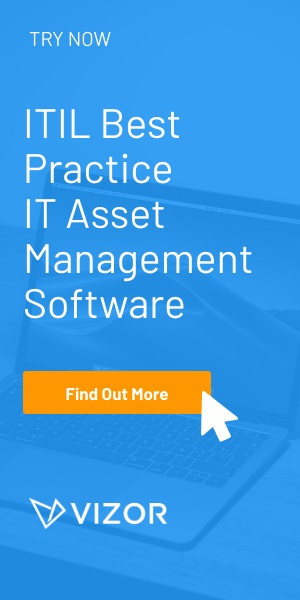Top 10 Reasons NOT To Manage Software Licenses In A Spreadsheet
Using a spreadsheet to track software licenses or cloud subscriptions might be effective for small organizations. However, as your software estate grows, it becomes increasingly difficult to manage your software assets and their processes. If you aren’t convinced, here are 10 reasons why you need to reconsider managing your software assets in a spreadsheet.
10. Inaccurate Data
Multiple departments and upper management rely on information from the IT department. This can be for budgeting, forecasting or just making a purchasing decision. However, it’s hard to rely on information taken from spreadsheets. The manual entry of data makes spreadsheets prone to human error. With hundreds of cells, it isn’t difficult to enter some numbers in the wrong row or column. As cloud solutions make it possible to share spreadsheets, there is also the possibility of erasing data, changed or moved. And, the lack of ownership is a great concern as users make unapproved changes that can potentially be spread across the company. Finally, spreadsheets have the risk of not updating at all.
Learn about VIZORTry VIZOR Online
9. Hidden Data
It is the IT department’s responsibility to know what is going on with the organization’s assets. However, the data in a spreadsheet can be hard to analyze and extract. The sheer volume of data makes it easy to misinterpret. Overall, spreadsheets don’t give you the answers you need when you need them. It isn’t easy to find out how many software licenses you have, how many are currently used or how much they cost, without spending too much time on finding an answer that may not even be accurate.
8. Static Information
IT departments execute several processes surrounding software assets like deploying software to employees. In a company of 100 employees, for example, it is quite difficult to deploy 100 licenses and keeping track of them in a spreadsheet. Imagine listing the number of computers in the company and the licenses on each device. Then, updating those cells every time an employee leaves or joins the company. The static nature of the spreadsheet does not consider the processes or even the historical data that IT may need access to.
7. No Notifications
Part of managing software is knowing when you need to purchase more licenses, when it needs to be renewed or when maintenance is due. This information can be displayed in a few columns of a spreadsheet but will require active checking. Spreadsheets aren’t intuitive to proactively send you notifications or reminder emails. Why is that important? Being up-to-date on renewals, for example, gives you a leg up on negotiations and purchase discounts whereas maintenance notifications ensure doesn’t elapse exposing you to penalties to renew. The reactive approach of a spreadsheet does not keep the department informed of the status of their software estate.
6. Information Isn’t Centralized
The information IT needs cannot be in one spreadsheet. For example, the cost of software might be in an accounting system, the vendor name can be in one of your spreadsheets and the physical contract could be in a cabinet. The data stored in spreadsheets are limited and do not include all the pieces of information that are essential for decision-making. For IT to work effectively, they need information readily available and not hidden from the company.
5. No Integration With The Employee Directory
A large component of managing software assets is knowing who is using them. In a spreadsheet, software licenses are associated with the correct user. It requires updating every time an employee leaves or joins the company. This process is then repeated for every software license. The lack of integration with the “live” employee directory makes it difficult to maintain an updated list of who is using what. In addition, the spreadsheet will not assist in the processes surrounding the provisioning or de-provisioning of the software. IT will need to coordinate with HR to retract or deploy software.
4. Lack Of Tracking Costs
As software is becoming a more significant part of business, its cost is increasingly important to management. However, as discussed before, the information in spreadsheets is usually inaccurate. Not only can expenditure be poorly tracked in spreadsheets but may not even be displayed at all. Spreadsheets are not even able to integrate with an accounting system that can monitor expenditure for them.
3. Inability to Forecast
Related to the previous point, when there isn’t a good grasp of software expenditure, it’s difficult to forecast the costs of the next quarter or the next year. Also, without connection to the employee directory, you can’t anticipate the number of employees that will join the company or account for the change of employees over the last few years. The inability to spot trends over time make it difficult to forecast software expenditure, making it almost impossible to negotiate with vendors and get good prices.
2. Unable To Maintain An Effective License Position
An Effective License Position (ELP) indicates whether you’re over- or under- licensed. Spreadsheets are not able to automatically detect if there are too many licenses or not enough. Having too many licenses poses a surplus cost and missing licenses is not ideal for employee productivity or vendor audits.
1. Neglects Cloud Subscriptions
It is already a challenge to monitor intangible assets like software licenses. There is another level of difficulty when the software is not even installed on the company’s computers, like cloud subscriptions. How do you track cloud subscriptions in a spreadsheet? You can’t. Other than listing the subscriptions you never really know how many you have, who is using them and if they’re used. As a software asset, cloud subscriptions are still IT’s responsibility and spreadsheets do not help the department in monitoring cloud subscriptions.
SUMMARY
Spreadsheets consume a lot of resources in exchange for very limited information. Therefore, you should consider alternative solutions if you’re currently using spreadsheets to manage your software assets. So if you just started monitoring your software, do not even start with a spreadsheet. The time you invest in searching for a solution is a fraction of the time you would have spent updating your spreadsheets!
Need a IT Asset Management Tool?






